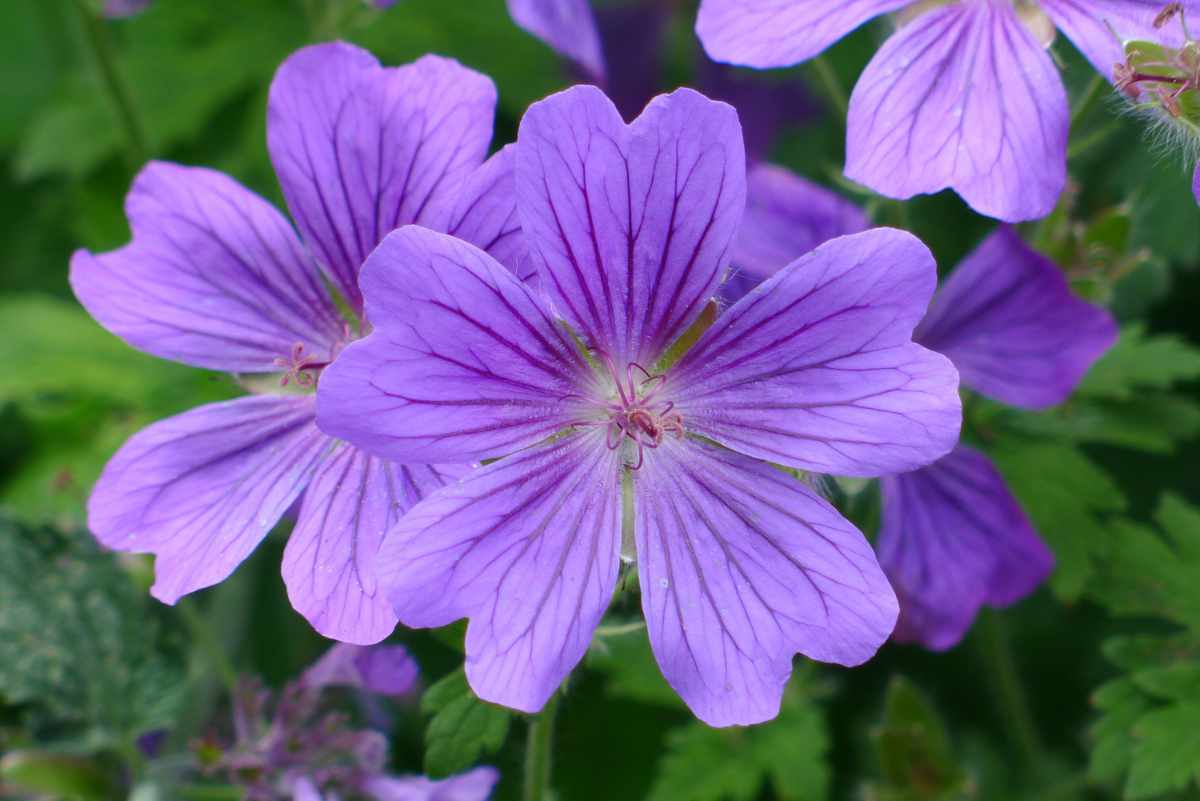Award-winning TV garden designer brothers Harry and David Rich, presenters of BBC One’s Garden Rescue, reckon purple is among the coolest colours to feature in garden colour schemes.

Harry explains: “Purple is fashionable because it is quite prominent and gives you a lovely depth in the garden but isn’t too garish.
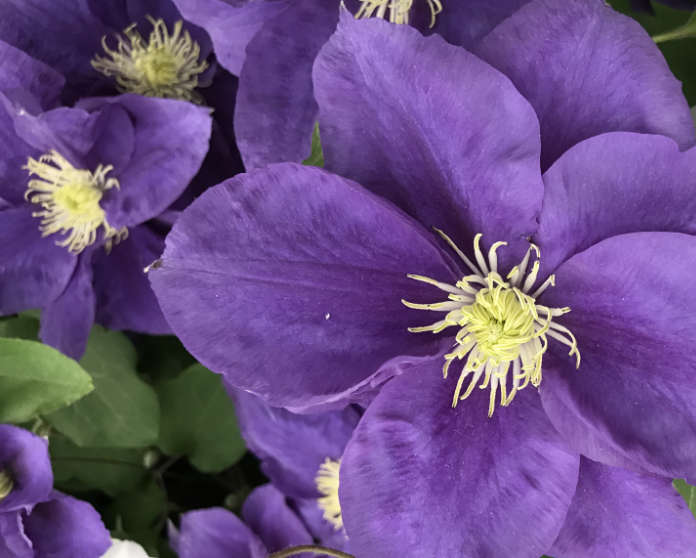
“It can be easily blended with other plants. It does a lot of talking but it doesn’t talk too much. It complements other colours and it’s a good way of creating an informal garden with a punch.”
Best way to add purple plants to your garden
So, if you’re tempted by gorgeous purple flowering plants such as lupins, irises, salvias and alliums, what’s the best way to weave this rich colour into your own garden scheme?
Put the right purple flowering plant in the right place
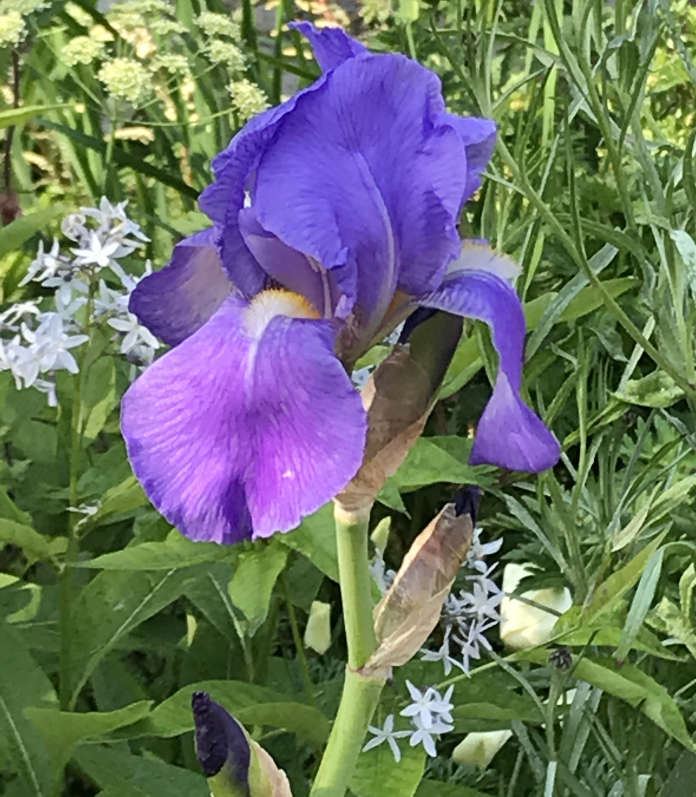
“The first thing to consider is the aspect,” says David. “You need to choose the right plants for the right position. Plenty of plants will tolerate shade such as wild geranium, but in a sunnier spot you could have perovskia (Russian sage) or lavender.”
Irises prefer full sun in a moist but well-drained soil, with plenty of added organic matter.
“They have a blousy flourish and then are over in a week,” David observes. “Some people might find them unnecessary but to have them poking up in a planting scheme just for that short spell can dramatically change the atmosphere, especially if you are using some of the bearded irises or even Iris sibirica ‘Tropic Night’, which can add so much depth to a planting scheme.”
Combine different shades of purple
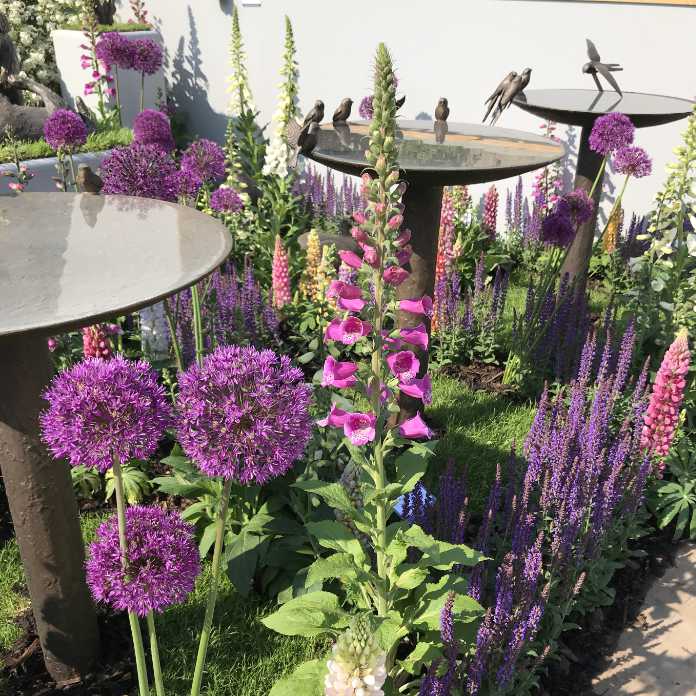
Use purple foliage from plants such as Sambucus nigra, which has a very deep purple leaf and a soft pink flower, with softer, lighter purple hues. Play around with the contrasts of the two purples to emphasise the light colour against the deeper tone.
“The colour doesn’t stop at ground level. You can elevate the colour by using shrubs such as syringa (lilac) with its beautiful plumes of purple flowers,” says David.
“There’s a growing trend of using shrubs in the garden because they provide loads of interest and many of them require much less maintenance than ground-level perennials.
Try out smaller alliums
Alliums have been among gardeners’ favourites for more than a decade and are still fashionable, although some of the smaller ones are becoming more popular, compared with the huge varieties, says David.
“The trends are about depth of planting now. An allium is quite airy, with thin, wiry stems and doesn’t actually compete with anything, but sits among the planting scheme. It helps knit together a more natural planting scheme.”
Harry adds: “The reason alliums are used so much is that they are a very unique shape. Smaller ornamental varieties are becoming popular. The days have perhaps gone when people were using the blousy, more globular types.”
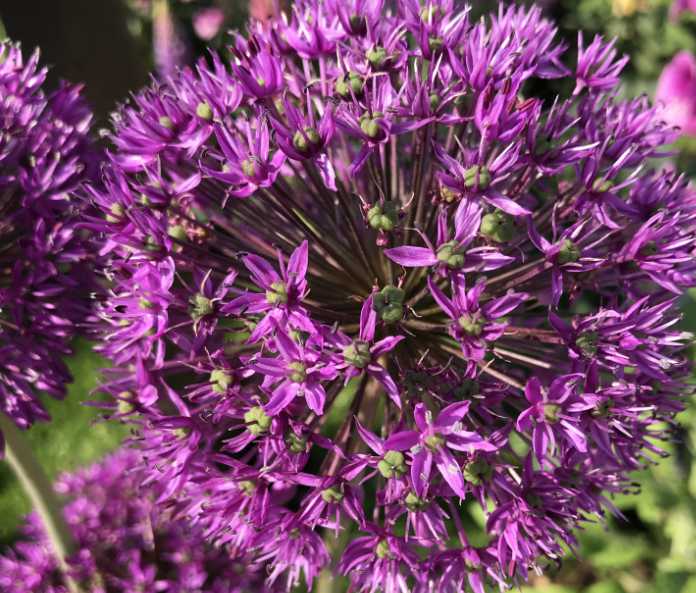
Allium sphaerocephalon, for example, is an alternative small-headed blackcurrant-hued type which flowers later than others.
Alliums make good partners for grasses, which have height and movement and hide the fading straggly leaves of the allium before it flowers. Grasses create a muted scheme below the allium flowers. Plant cow parsley as well and that will add shape and colour.
“When you lay alliums out in the bed, do it as a random scatter, so you are creating a cluster in the corner and then drifting them through, to drag the eye through the planting scheme without it being too forced,” David advises.
Contrast colours
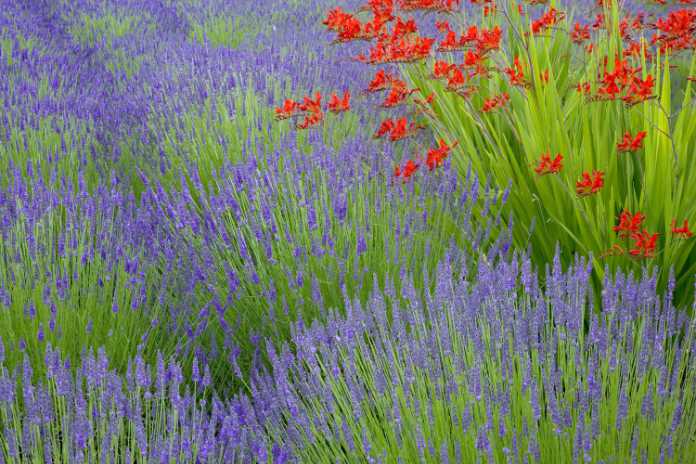
Good contrasting colours for purple include orange, say the brothers. Combine purple plants with orange-hued achilleas, geum and trollius. Crocosmia also make good companions as their shades run from orange, to yellow, to red.
For a gentler scheme, combine different shades of purple in your border, perhaps with creams to soften the tone.
Think about plant architecture
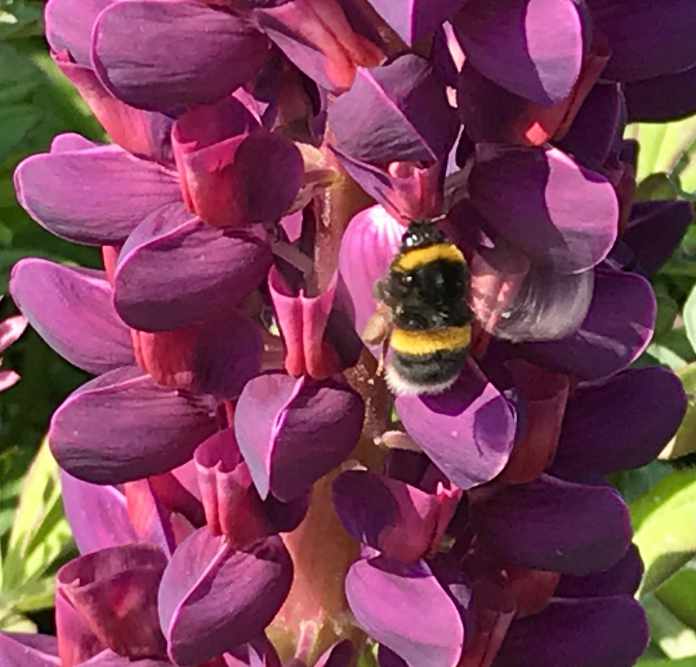
Purple lupins are often used to striking effect at the garden shows. If you plan to feature these architectural beauties in your garden, keep the surrounding planting simple, Harry advises.
“With something so dominant, plant something simple around it like Deschampsia flexuosa (wavy hair grass), keeping it airy and minimal, to allow the lupins to do the talking.”
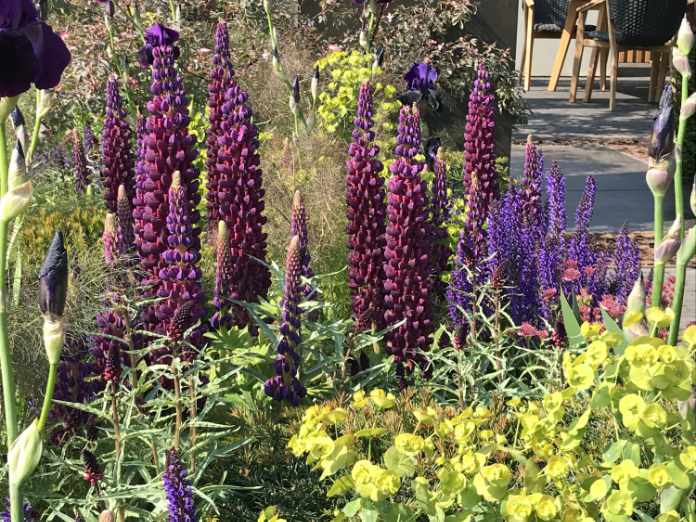
Salvias are also architectural gems, he says.
“They are unique in the way that they have lovely long spires of purple. One of our favourites is Salvia ‘Hot Lips’, but there’s also Salvia nemorosa and ‘Amistad’, which has larger leaves and delicate flowers. Salvias have many varied purple hues.
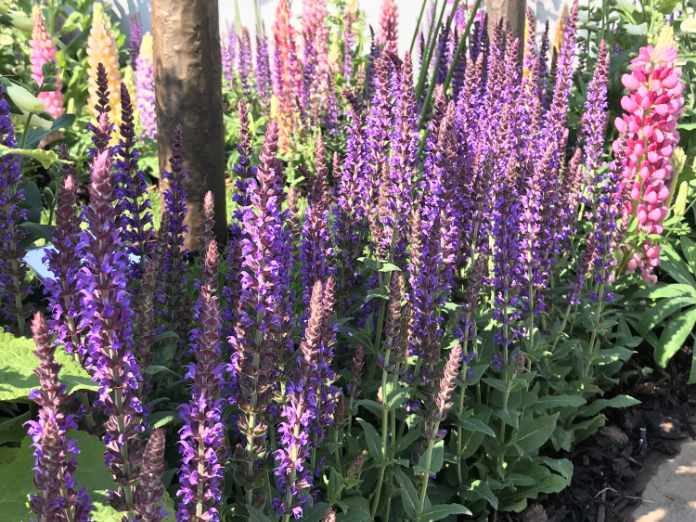
“Use salvia as a base plant and make the most of the varieties of it. It’s about a combination of the same plant, knitted together through the variety of colour and leaf among like-minded plants. Certain species can deal with a bit more drought, which makes it easier to maintain in hot weather.”
6 purple flowering plants for your garden
From the cheerful flowers of violas and pansies to the dramatic berries of viburnum and callicarpa, the colour purple in all its forms can enrich spaces both inside and out.
The cool rich hues ranging from soft mauves to lilacs, deep blues, indigo and violet, can add as much drama or subtlety as you want. For eye-catching spectacle, purple planting mixed with contrasting zingy oranges is a winner, or combine soft mauves and lilacs with sophisticated creams and whites for a more calming effect.
Whatever you choose, purple hues can bring welcome colour in winter, when so much else has faded. Here are some great purple plants to consider…
1. Hebe
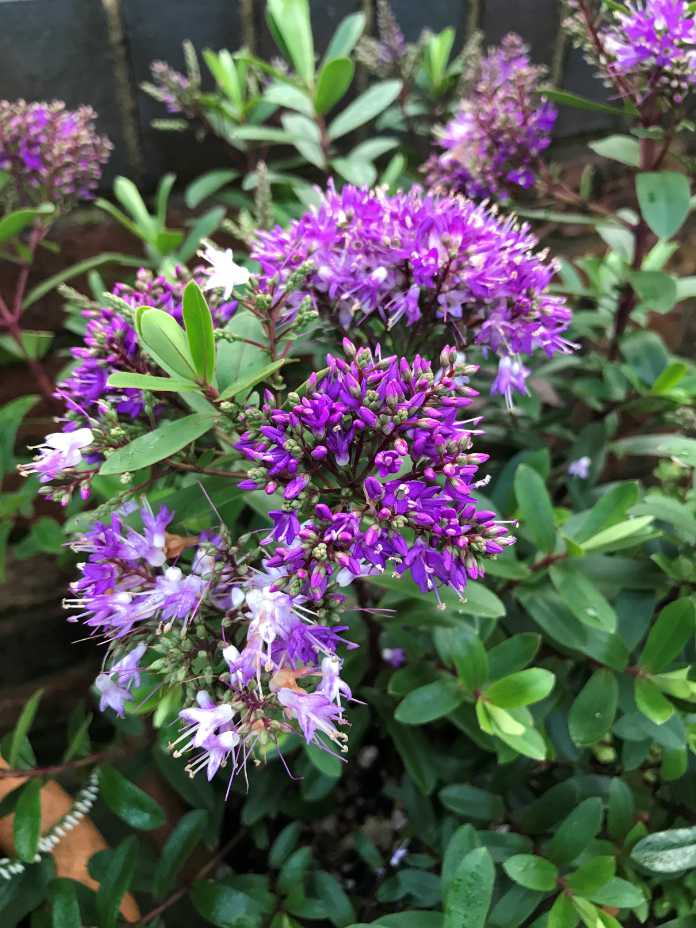
There are varieties of this garden stalwart shrub that offer an array of purple hues, such as the red-purple leaf edges of ‘Magic Summer’, a variegated-leaf type that looks gorgeous in a pot with white winter-flowering heather and soft purple violas. It comes into its own in late spring and summer, when leaf edges become deeper in colour and bright blue flowers emerge.
If you want a hebe that bears purple flowers from summer through to autumn, in mild winters flowering into November, try H. ‘Inspiration’, a compact form equally at home in a pot as it is at the front of a border. Plant in a sunny spot or partial shade in moist, well-drained soil. It is frost hardy, but may need some winter protection from very cold winds.
2. Ornamental cabbage (Brassica oleracea)
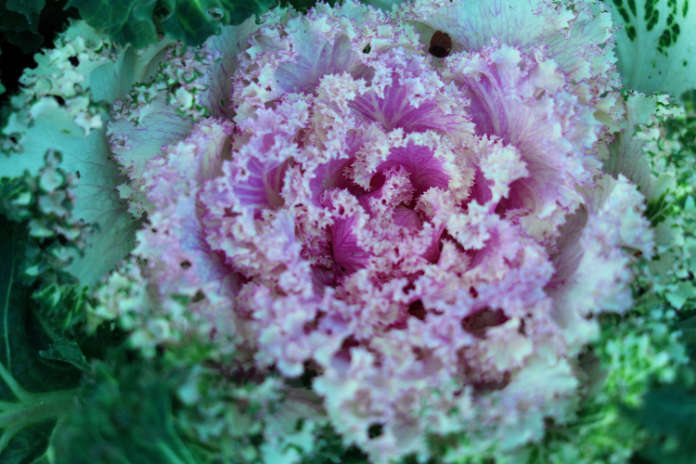
These showy specimens add a frill to containers with their blowsy leaves that increase in purple intensity closer to the centre. As the weather cools their colours change and they provide great additional interest planted with small potted evergreens such as box, skimmia and ivy.
Alternatively, plant white ones next to purple ones in a chequerboard effect in a window box or large pot. You can also buy ornamental kales, which are not quite so rosette-like, but will give a show through the winter until they run to seed when the warmer spring weather arrives.
They’ll need moist but well-drained compost and prefer full sun or a slightly shaded spot, although their colour tends to intensify if they get plenty of bright sunshine.
3. Viburnum davidii
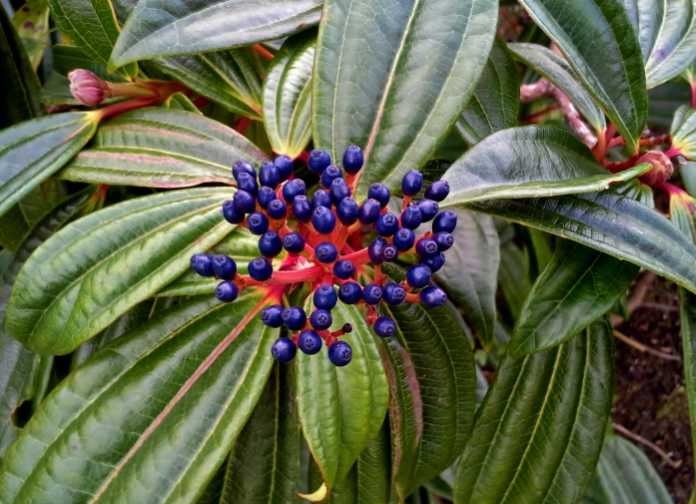
These bold evergreen shrubs produce clusters of white flowers that then give you dramatic blue-black berries, contrasted against their rich, leathery green leaves. Berries are only produced on the female plant, so you will need to plant a male close by to guarantee berries. Growing 75cm x 90cm, it will grow in any well-drained soil and will tolerate shade, as well as atmospheric pollution, so is well suited to city gardens.
4. Callicarpa bodinieri ‘Profusion’
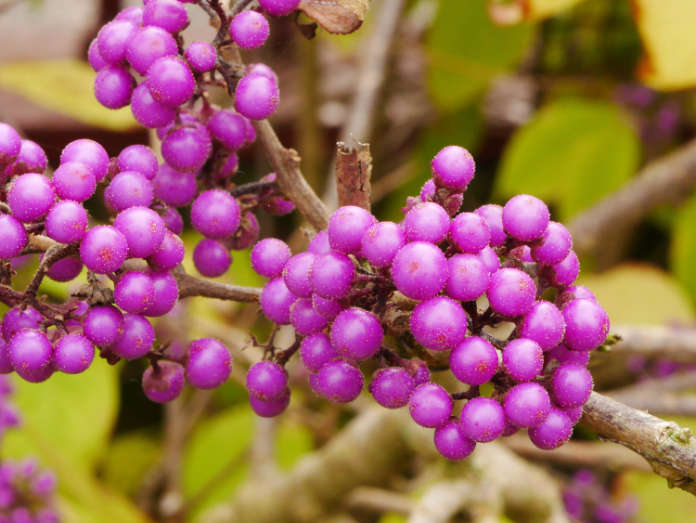
Now, these are a more unusual colour of berry than most – the bright violet berries that appear in autumn are often used in floral displays, as are the golden autumnal leaves that provide the shrub’s backdrop.
In spring, its bronze young foliage also adds colour to floral displays. It should thrive in moist but well-drained soil in full sun or dappled shade, and is best planted somewhere near the house, where you’ll be able to appreciate those bright berries in their full glory.
5. Pansies and violas
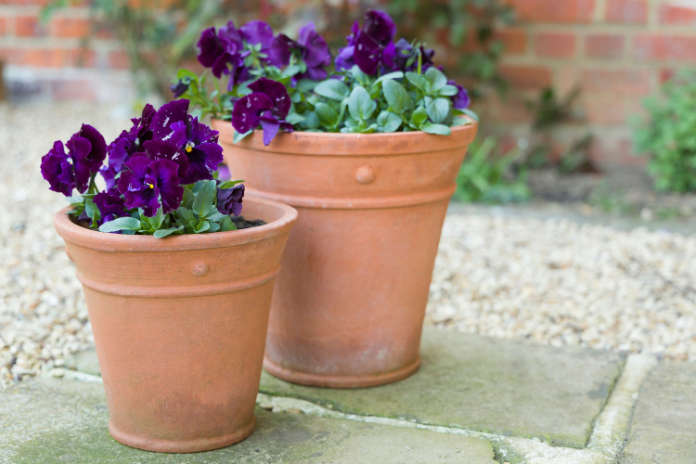
Of course, every hue of purple is evident in these autumn and spring favourites, from deep velvety tones with splashes of yellow in the middle, to soft lilac hues which give a subtle lift to containers amid evergreens and trailers. Yes, they will die down when winter sets in, but wait till spring and they will pop up again, providing dots of colour in containers and borders.
6. Tradescantia zebrina
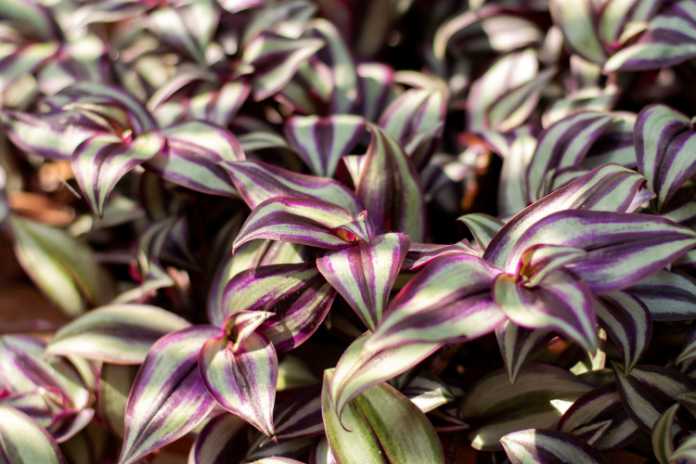
If you want to bring the power of purple indoors, look no further than the eye-catching striped foliage of this trailing evergreen perennial with its colourful foliage of silver, purple and green. Part of the spiderwort family, it’s really easy to maintain and will root in many environments, but the colours will be most intense in bright, diffused light.
You may also be interested in…























































